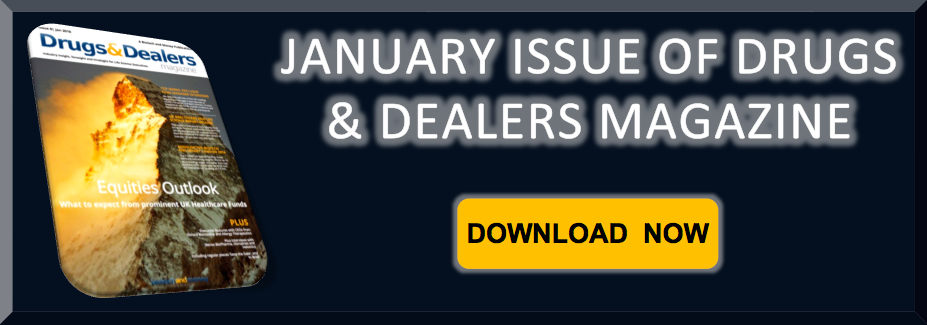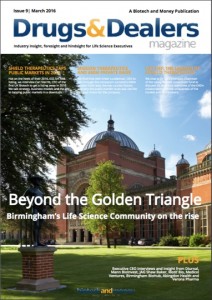Creating a substantial franchise in the allergy sector
Quality sites
- Online Casinos UK
- Casino Non Aams
- Casinos Not On Gamstop
- UK Casinos Not On Gamstop
- Best UK Casinos Not On Gamstop
- Casino Sites Not On Gamstop
- Meilleur Casino En Ligne Live
- Casino Sites Not On Gamstop
- Casino Sites Not On Gamstop
- Non Gamstop Casino Sites UK
- Non Gamstop Casinos
- Best Online Casino Canada
- Casino Sites Not On Gamstop
- Non Gamstop Casino UK
- UK Online Casinos Not On Gamstop
- Best Slot Sites 2025
- Casinos Not On Gamstop
- Meilleur Casino En Ligne
- Non Gamstop Casinos
- Slots Not On Gamstop
- Non Gamstop Casino
- New Online Casinos Not Registered With Gamstop
- Casino Non Aams Sicuri
- Casino Sites UK Not On Gamstop
- Casino Non Aams Italia
- Bitcoin Casino
- Meilleur Site Casino En Ligne Belgique
- Casino App
- Migliori Siti Scommesse Non Aams
- Meilleur Casino En Ligne De France
- Nouveau Jeu Casino En Ligne
We recently spoke to Manuel Llobet of Allergy Therapeutics about franchising in the allergy sector. As the Chief Executive Officer Manuel is responsible for the executive management of group operations, investor relations, and implementation of the Board’s collective decisions overseeing all operational aspects of the Group and directing the long-term strategy.
B&M: Manuel, would you like to give us Allergy Therapeutics’ elevator pitch?
ML: Allergy Therapeutics has a unique proposition: it has a highly differentiated product in a market that is expected to grow to double digits over the next 10 years. This product is an ultra-short course treatment for hay fever. We’re hoping for a strong growth in the US market, where we are finishing our clinical trials. It’s a unique opportunity to have a highly differentiated product, penetrating a big market like the US, and maintaining high protection from an IP point of view.
If we are successful in launching Pollinex Quattro in the US, we will have transformed the company from roughly 75 million dollars to a half a billion dollars.
B&M: In 2007 you guys went through quite a difficult period after the FDA decided to halt the development of Pollinex. Obviously now the worries have been proven to be unfounded. Could you tell us a little bit about the story of that period of time and the impact that the FDA’s decision had on the company?
ML: The decision triggered a perfect storm for the company. Up until that moment the company had built terrific momentum. The share price had been growing and growing and we were progressing quite well with our clinical development plans. We’d completed 14 clinical trials for the Pollinex Quattro franchise, Pollinex Quattro Grass, Pollinex Quattro Ragweed and Pollinex Quattro tree vaccines, and we had 3 IND’s open. We then experienced this adverse event with the FDA. It took 5 years to clarify, and in the end we were absolved and the issue of the potential links of the MPL or similar adjuvant to auto-immune responses was cleared up.
However, because of the adverse event, the company had to put its main project – launching Pollinex Quattro in the US – on hold; and then the share price, which had been at 120, started to slip down and down.
We, like all our competitors, then faced the economic downturn in 2007. We had to deal with all the austerity measures that the governments put in place to address the fiscal deficits. We were especially highly impacted in Germany, where the austerity measures imposed all sorts of discounts and price freezes on us. All in all we had a significant top line impact in our German sales which were 75% of our total sales. So in 2009 we were in a really tough situation. We had £30 million debt that we took from RBS to finalise the clinical program in the US. We were losing money because we were doing clinical trials; we were facing the biggest economic downturn in Europe for more than 50 years; and with all these austerity measures impacting on our main German market, we had to withdraw presentations, which therefore impacted on our sales and ability to invest in clinical trials.
The consequence of all this was that the company looked for a strategic investor – which is where I became involved in the company. We reinforced the balance sheet, paid a lot of the debt, and started the turnaround programme. We agreed with the Board and the Executive Team that, provided we could not move forward in the US, we should be totally focused on a revenue business model.
So during the first four years, we were totally focussed on that core, core business, ignoring the big distraction that was the US. This gave us the opportunity to be totally focussed on our portfolio and expand our European market. I think that this crisis gave us the opportunity to build a strong, reliable revenue model that could be a future platform for a global expansion.
B&M: That’s the silver lining of the clouds that formed in the ‘perfect storm’ you described then?
ML: Exactly. Since we decided to do this we’ve been profitable on the operational side. We went from 30 million in debt to 0. We are cash flow generative, and we are the best performer in Europe and beating the market by 10 points! We are taking around 1% market share a year in our competitive markets, more or less, and we expect this will continue to accelerate.
B&M: It’s also a good selling point to investors. To have that story behind you, the revenue generating business model. You can use that as a platform to build on.
ML: Exactly. Up till now we have been imposed on to be profitable and cash flow generative. But we are not primarily driven by profitability yet: for us we think there is going to be consolidation in the sector, and we want to be one of the consolidators. We’d prefer to take 1, 2 or 3 point market share per year rather than making 2 or 3 million more a year, at least for the time being. Then, when we get the market share we want, we will be able to increase our margins.
B&M: I’ll come back to M&A and consolidation in a minute. Could you distil any takeaway lessons you’ve learned from that whole experience?
ML: I think that the US project was a magnet for the management team, in terms of the work and the investor community. I was not in the company in that time, but it was exciting, and the investors were so excited. In my view, the top management and the Board started to disregard the core business a little.
It’s not a criticism. But when you have a big project, you have the risk to crowd out all the other things. And I think the core, core business was not carefully managed and therefore when the US project was put on hold for a while, we had a period when, in my view, we were really losing market share and the teams were demotivated. The core business was in bad shape.
The lesson to learn is that even if you have exciting, transformational projects, you have to always be sure your core business is in good shape. Projects may or may not succeed, but the core business is the reality you have. It’s what keeps you alive.
IP: Another lesson to learn is that you shouldn’t finance clinical development with debt, because if something goes wrong, you’ve got nowhere to go other than going back to your shareholders. It could pay off, but if something ever goes wrong – which it can do – it puts you in a very difficult position.
B&M: That would be very interesting to a lot of our readers, who are considering using venture debt financing solutions to bridge the valley of death. Would your advice be to stay away from debt finance solutions as much as you possibly can?
IP: It’s risky. If you go back to this period coming up to 2007, Allergy Therapeutics was the darling of the stock exchange. We’d had a really successful IPO and we’d run 14 clinical studies, all successful. One of them was the largest ever clinical study in allergy in the world, so we were trail-blazing – we were just very unlucky that one of our trials had a problem that wasn’t related to our study, but the doctor thought it might have been. But companies can be unlucky and things can happen. And if you want to take that risk into account, it’s best not to finance development with debt, because those things can happen.
B&M: Let’s focus now on the turn around. In March you had a very significant event: you fund raised the 20 million that now allows you to take Pollinex to registration by 2019. How important has that particular development been for the transformation that you are now seeing with the market value of the company and everything else?
ML: I think it’s been absolutely key. Up till now, with our improvement of the revenue business model, slowly we have started to get more confidence from the investors, our people and the market. We achieved one point where we were solid enough to go to the market and say ‘we have a clinical hold lifted, we’ve been talking for several months with FDA, we have agreement on how to move forward, here we are, we need 20 million to finish the clinical trials’. And we got it. So we got the investors’ confidence to go ahead, and this will allow us to finish the programme and register Pollinex Quattro, which will be transformational for the company. On top of that there have also been some additional benefits: we have very good blue chip institutional investors, and we have now become a more liquid company. So from all aspects it’s been a really terrific – and transformational - event.
B&M: And you’re very confident that the final regulatory loops are going to be cleared? There’s no risk or sense that something could derail the final regulatory approval?
ML: As Ian said, you can never say never. But this is not a proof of concept. This is not a phase 1 or phase 2 project; we are at late stage. An European version of this product has been commercialising in Europe for 10 years and we know doctors are happy with. In 10 years we’ve treated 200,000 patients with Pollinex Quattro in Europe. The US version is slightly different, but is essentially the same product. B&M: And you’ve also got now the confidence of investors. They’ve come back. IP: If you look at the risks, we tick the boxes against most of the risks. The only one that remains is the unknown, which is always a risk. But if you analyse the chances of success of this product against some new candidate that hasn’t been in the market before, then our project is significantly de-risked compared to most other companies.
B&M: Let’s talk about your M&A strategy. You mentioned earlier that you’re looking for market share as a strategy rather than growth in profitability.
ML: With the current portfolio we think we can keep taking one or two points’ market share a year. But this penetration is driven mainly by short course vaccines like Pollinex and Pollinex Quattro that address the seasonal segment of the market.
We have now spent a lot of time filling the portfolio in related areas, like the perennial segment, which is almost as big as the seasonal segment, where we have products but we don’t have the best solution.
We are currently developing a Acarovac Quattro which will be a platform similar to Pollinex Quattro but for the perennial segment. For this segment, our internal growth will be underpinned by penetrating the market with a current portfolio, but also some other new technologies that we are analysing right now, like VLP platform to develop a Peanut vaccine.
This period of turnaround was like a nuclear winter: we’ve been talking to many people to try to do transactions, but of course our share price was depressed because we were working behind the scenes, repairing the machinery and improving margins and fine tuning the portfolio and so on. And we didn’t have visibility of all these improvements.
Things are starting to change because we’re starting to engage market share, get better top line growth and get better margins. The US approved first vaccines, the tablets for grass, and then there’s the IPO for Circassia as well. All these effects together meant that our share price went from 7 to 8 p to 15 to 20, making the company worth 140/150 million.
This share price and this market cap will allow us to reignite some of the projects we’ve been exploring. An example of that is Alerpharma, a small acquisition we did in Spain in June. We started to talk to these people 4 years ago. Many of these processes are very slow and based on confidence and trust, trusting each other, and in the end we could acquire that company with our own cash flows at a very good price. We think there will be some more opportunities to consolidate: the current market is a European market, at about $1 billion. But very soon, in 5 years, it’s going to be a global market. This depends on how quickly the US market switches from a homebrew preparation market to a registered finished product market, but in some years it could be a 4 billion dollar market.
So this will give us a huge opportunity. Very few companies are well placed to be global players, I would say 3 maybe 4. But this is also putting pressure on smaller local players in Europe, because the market is getting global. This means more investments, more requirements on the regulatory side.
We think that as we were able to consolidate this Spanish company, we will be able maybe to consolidate some others. And this is our first preference.
We are also looking at other targets related to allergy: dermatology, respiratory, diagnosis or immune-modulation for instance. All these areas are prescribed by many prescribers that we visit. If, for example, we had a good dermatological product, we could promote it with our salesforce, because we visit 2,000 dermatologists in Germany. We would be able to add top line without significant investment in commercial infrastructure.
Ideally, we would like to do M&A with competitors, because that would bring cost synergies. But in those related areas we would have top line synergy. We could significantly increase our top line without leveraging on our commercial infrastructure. So we are keen, and we want to increase our critical mass because, as I said, we want to establish a really strong, nice profitable business in Europe that could support a global expansion in the allergy area.
B&M: What do you think are the key catalysts for the business over the next 6 to 12 months? What can we expect to hear from you guys in the few months ahead?
ML: In an ideal world I would say three things: firstly, good progress on our clinical developments in the US, because that would put us closer to a launching of Pollinex Quattro in the US; secondly, to keep delivering on our market penetration and increasing our market share and critical mass in Europe – that will be reported in our interims and prelims; and thirdly, some transaction – ideally within the next 3 to 4 years we would like to do at least 2, 3, 4 transactions.
So ideally, in 2020 we should have 20% market share, have launched the Pollinex Quattro in the US, and have acquired 2 or 3 companies.
B&M: Manuel, Ian – thank you very much.
Manuel Llobet joined the Group in July 2009 following the successful refinancing in which Azure Ventures Limited was the main investor. As Chief Executive Officer, Manuel is responsible for the executive management of group operations, investor relations, and implementation of the Board’s collective decisions overseeing all operational aspects of the Group and directing the long-term strategy.
Allergy Therapeutics provide information to healthcare professionals about the prevention, diagnosis and treatment of allergic conditions with a special focus on allergy vaccination (also known as specific immunotherapy or desensitisation therapy). Allergy vaccination is a successful treatment that deals with the underlying cause of allergies and not just the symptoms.





Leave a comment